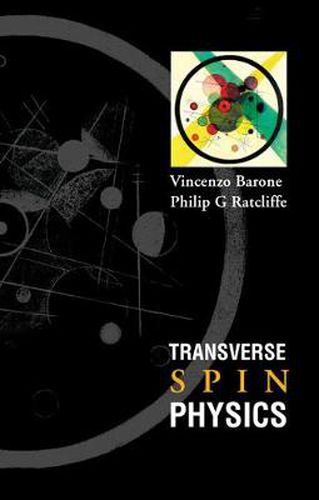Readings Newsletter
Become a Readings Member to make your shopping experience even easier.
Sign in or sign up for free!
You’re not far away from qualifying for FREE standard shipping within Australia
You’ve qualified for FREE standard shipping within Australia
The cart is loading…






This study deals with the theory and phenomenology of transverse spin effects in high-energy hadronic physics. Contrary to common past belief, it is now rather clear that these effects are far from irrelevant. A decade or so of intense theoretical work has shed much light on the subject and brought to the surface an entire class of new phenomena, which now await thorough experimental investigation. Over the next few years a number of experiments worldwide (at DESY, CERN and Brookhaven) will run with transversely polarised particles, providing data that will enrich our knowledge of the transverse spin structure of hadrons. The principle aim of this work is to assess the state of the art as it stands in 2002. After a few introductory remarks (Chapter 1), in the first part (Chapters 2-4) attention is directed to polarised deep inelastic scattering (DIS), particularly DIS on transversely polarised targets, which probes the transverse spin structure function g2. This structure function is examined within the framework of the quark-parton model and its improvement via perturbative QCD. The existing data are reviewed and commented on (for completeness and comparison, a brief presentation of longitudinally polarised DIS and of the helicity structure of the proton is provided). The second part of the book (Chapters 5-8) focuses on the transverse polarisation of quarks, the so-called transversity . The partonic content and the QCD evolution of the transversity distributions are presented in detail. The phenomenology of transversity is then studied in the context of Drell-Yan processes and of semi-inclusive lepto- and hadroproduction. The interpretation of data on single-spin asymmetries is discussed and, finally, the prospects for future measurements are reviewed.
$9.00 standard shipping within Australia
FREE standard shipping within Australia for orders over $100.00
Express & International shipping calculated at checkout
Stock availability can be subject to change without notice. We recommend calling the shop or contacting our online team to check availability of low stock items. Please see our Shopping Online page for more details.
This study deals with the theory and phenomenology of transverse spin effects in high-energy hadronic physics. Contrary to common past belief, it is now rather clear that these effects are far from irrelevant. A decade or so of intense theoretical work has shed much light on the subject and brought to the surface an entire class of new phenomena, which now await thorough experimental investigation. Over the next few years a number of experiments worldwide (at DESY, CERN and Brookhaven) will run with transversely polarised particles, providing data that will enrich our knowledge of the transverse spin structure of hadrons. The principle aim of this work is to assess the state of the art as it stands in 2002. After a few introductory remarks (Chapter 1), in the first part (Chapters 2-4) attention is directed to polarised deep inelastic scattering (DIS), particularly DIS on transversely polarised targets, which probes the transverse spin structure function g2. This structure function is examined within the framework of the quark-parton model and its improvement via perturbative QCD. The existing data are reviewed and commented on (for completeness and comparison, a brief presentation of longitudinally polarised DIS and of the helicity structure of the proton is provided). The second part of the book (Chapters 5-8) focuses on the transverse polarisation of quarks, the so-called transversity . The partonic content and the QCD evolution of the transversity distributions are presented in detail. The phenomenology of transversity is then studied in the context of Drell-Yan processes and of semi-inclusive lepto- and hadroproduction. The interpretation of data on single-spin asymmetries is discussed and, finally, the prospects for future measurements are reviewed.